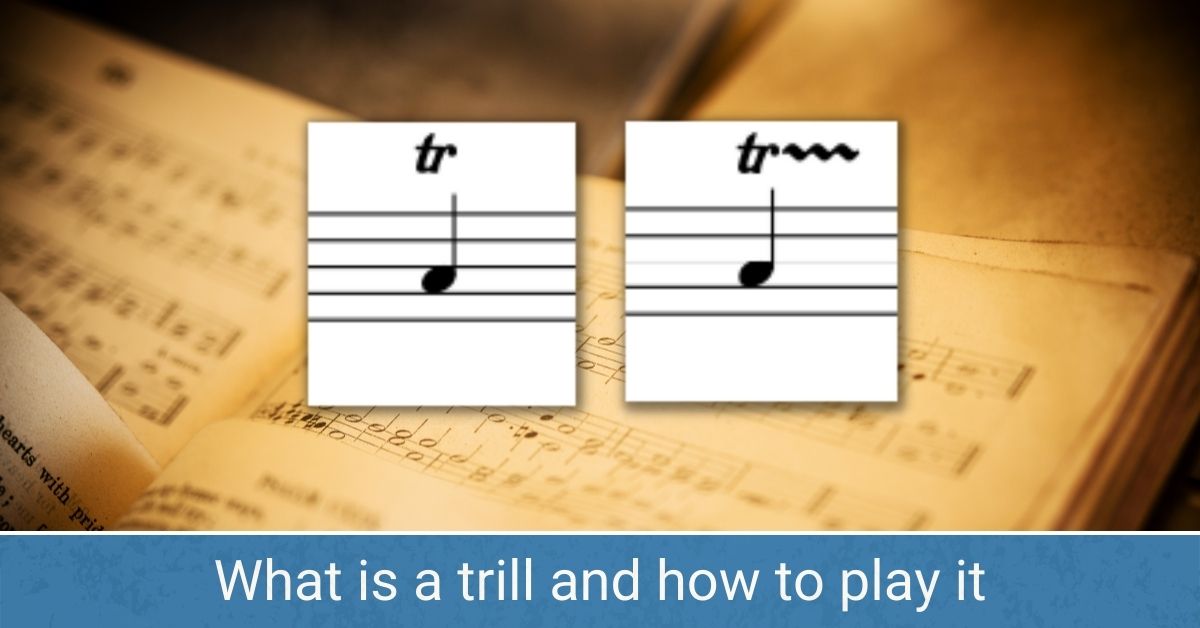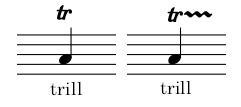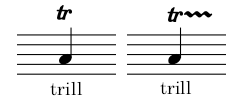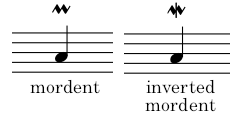Piano Trills Explained
April 20, 2021 by Taras (Terry) Babyuk
Introduction
A trill is one of the most common musical ornaments and can sound beautiful when done well. If you are not confident about your understanding of what a trill is or how to play it correctly, look no further. This is the only article you will need to become an expert on trills (well, in theory at least. You still have to do the practicing!).
What is a trill?
A trill (old name: "shake") is a popular musical ornament that involves a quick alternation between two adjacent notes. In most cases, the alternation happens between the note indicated by the trill and the next (higher) note of the scale.
Composers use trills to add rhythmic and melodic interest to a musical passage.
How a trill is notated in music

These are the two most popular ways to indicate a trill in modern music notation.
Example of a trill
Here is a Impressionist-era piece that starts on a very prominent trill. In fact, it has quite a few of them! As you listen, think about the effect the trill gives to the piece and why the composer may have decided to use it.
Example of a trill in "L'isle Joyeuse" by Claude Debussy
What note does a trill start on?
This is a very common question and one many students and music enthusiasts get confused about. Here is the simple answer:
Before the 1800s (Baroque & Classical Eras):
The trill started on the note above the one indicated by the trill. So for example if the note "E" was marked by a trill, you would start the trill on note "F".
After the 1800s (Romantic Era up to present day):
The trill begins on the same note that is indicated by the trill. So if the note "E" is marked by a trill, you start the trill on "E" as well.
Trill vs. Mordent
The main difference between trills and mordents is in in the number of alternations between the adjacent notes. With mordents, we alternate only once between the principal note (the note symbolized by the mordent) and either the upper note (in the case of a mordent) or lower note (in the case of an inverted mordent). With trills, the number of alternations is longer, though the exact number will depend on the rhythm as well as the musician's individual interpretation.
Also, trills by definition alternate with the higher note, while with mordents it can be either the higher or lower note (see diagram below).
A mordent is sometimes referred to as a short trill, which contributes to the occasional confusion between the two terms.
Trills

Two different symbols for trills. You may see any one of these symbols in modern music.
Mordents

Two variations of mordents. The mordent (also known as upper mordent) alternates with the note above, while the inverted mordent (also known as lower mordent) alternates with the note below.
Conclusion
If you are an active musician, you are sure to come across many trills in your playing. For this reason, we hope that this article helped you get a better grasp of this popular musical ornamentation. To make your trills sound nice a sharp, be sure to spend enough time practicing them. Tip: if possible, use your stronger fingers on the trills, as this will give you better dexterity and control over how they sound. Happy trilling!
Just fill out our quick trial lesson form and wait to hear from us within 1-2 business days. If you like your trial lesson, you can sign up for regular lessons with us! Our lessons are available online (Zoom or Skype) as well as in-person if you live close to our location. Start learning your favorite instrument with one of our amazing teachers today!
